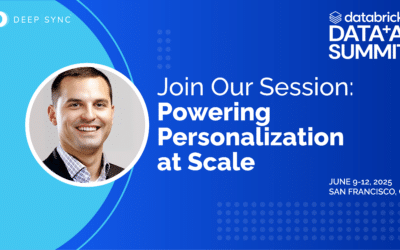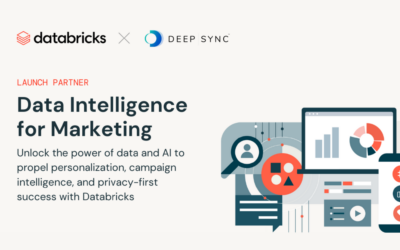Advertisers have long struggled to use first-party customer data to create highly targeted advertising campaigns. However, due to increased privacy restrictions, the decline of third-party cookies, and fragmented customer journeys across multiple devices, traditional targeting methods aren’t as effective as they used to be. In fact, 56% of advertising decision-makers report facing limitations in audience targeting in the current landscape.
Google Customer Match can help brands and agencies leverage their first-party data to create highly targeted campaigns that accurately reach existing customers, re-engage past buyers, and identify new prospects. In this guide, we’ll cover how Customer Match works and how it can help advertisers achieve more efficient return on ad spend (ROAS), higher engagement, and better overall campaign performance.
What is Google Customer Match?
Google Customer Match is a tool that enables advertisers to reach and re-engage customers across Google platforms, including Google Ads and Google DV360. This enables advertising on a variety of products, such as Gmail, Search, YouTube, and more.
Unlike Google’s third-party cookies, Customer Match uses brands’ first-party data. This makes it a more privacy-safe, future-proof solution for personalized advertising and audience retention.
How Does Customer Match Work?
To leverage Customer Match, advertisers begin by uploading their first-party data. This can be in the form of a customer list or data file that contains mailing addresses, email addresses, or phone numbers. Google then matches the customer data to Google users across its platforms.
This process enables advertisers to create or update campaigns to reach customers from their uploaded data file that Google has identified as Google users. So when those customers are signed into their Google account, they’ll be served advertisements.
Benefits of Using Google Customer Match
With Customer Match, marketing becomes more effective; advertisers can experience increased campaign effectiveness, conversion rates, and return on ad spend. And with more accurate targeting, it’s easier to reach more of your existing customers.
Here are some benefits of using Customer Match:
Cross-Device Targeting:
Since Customer Match is tied to Google accounts, it enables advertisers to target users across all of the devices where they sign into their accounts. So whether consumers are browsing the Shopping tab on desktop or scrolling YouTube on mobile, your ads will reach them.
Higher Conversion Rates:
Because Customer Match audiences use first-party data, they outperform cold audiences. The ability to accurately target past buyers and already-engaged users typically leads to higher click-through and conversion rates—making your campaigns more effective overall.
Fuel Smart Bidding:
By providing better audience signals, the Customer Match feature enhances Smart Bidding strategies to optimize ad delivery and maximize ROI.
Customer Match Use Cases
While all advertisers can benefit from Customer Match, here are a few use cases where this tool is especially helpful.
Seasonal Retargeting
Customer Match makes it easy to re-engage seasonal customers with targeted campaigns. By serving ads to last year’s holiday shoppers or users with an upcoming subscription renewal, brands can encourage customers to make another purchase.
Example: A fashion retailer may launch a springtime campaign to target past customers with ads for a new line of bathing suits if they have previously purchased one of the brand’s bathing suits.
Re-engage Cold Contacts
Many businesses struggle to re-engage lapsed customers. Because Customer Match enables improved targeting, you can ensure you’re reaching the right customers; this can help you convert “lost” customers to new opportunities.
Example: A software-as-a-service (SaaS) company can launch a campaign to target customers who have previously paid for a subscription or signed up for a free trial with an offer to re-subscribe.
Drive Repeat Purchases with Existing Customers
Target previous buyers with personalized ads to encourage repeat purchases. For example, engage current customers with promotional offers, cross-sell and upsell opportunities, or VIP customer rewards.
Example: A tech company may launch a campaign targeted to customers who have recently purchased a laptop to promote compatible headphones.
Enhanced Onboarding to Google Ads and Google DV360
Deep Sync is a Google Customer Match partner and can now support Google Ads and DV360 as destinations for Enhanced Onboarding. Enhanced Onboarding, also called first-party data onboarding, enhances customer data with relevant online and offline data including identifiers like email addresses, phone numbers, IP addresses, and Mobile Ad IDs.
The more identifiers that flow to a downstream platform, the more likely the platform will be able to find a match. This solution helps expand addressability and boost match rates, enabling improved first-party data activation across Google’s ecosystem including Search, Display, YouTube, and more.
Deep Sync’s Enhanced Onboarding, an alternative solution for first-party onboarding to Google Ads and Google DV360, is available on the Deep Sync One platform. This process works by ingesting first-party data from a customer data file and enhancing it with online and offline identifiers from Deep Sync’s robust identity graph to maximize match rates. Once a consumer record has been identified and enhanced, the data can be delivered to Google Ads and/or Google DV360 using the Google Customer Match Audience API within 24 hours.
One of the most significant benefits of Deep Sync One’s onboarding process is the data enhancement that we perform prior to delivering your file to the selected destination. This enhancement of your customer data aids in the matching process, which can lead to a higher percentage of matches identified through your desired destination.
Expand Your Reach with Household Matching
Control the precision of Enhanced Onboarding by toggling between the individual- and household-level matching options. While individual-level matching is more precise, household-level matching extends your reach to other members of the household—ultimately increasing your overall match rates.
Segment Your Customer Match Lists for Better Results
Power highly relevant messaging by creating customer segments prior to onboarding your first-party data to the Google Search network and Google Display network. Our customer segmentation feature enables you to achieve audience targeting goals through the application of Deep Sync’s demographic and interest data attributes. These attributes serve as filters to identify and group select members of your audience. And, multiple segments can be created from a single customer file.
How to Get Started: Leverage Customer Match with Deep Sync
To get started, register for Deep Sync One. On the login screen, select “Get Started.” Then, enter your email address and password. You’ll be prompted to add a credit card and select a destination. Both entries are optional at this stage; however, a credit card is required for billing purposes before Enhanced Onboarding can begin.
Instructions for establishing Google Ads and/or Google DV360 as your destination of choice are available in this User Guide.
Want to learn more about Enhanced Onboarding?
- Learn how Enhanced Onboarding works to boost first-party match rates in this blog post.
- Enhanced Onboarding is available for The Trade Desk. Learn more in this blog post.
- Download this product sheet for more information about Deep Sync’s Enhanced Onboarding.












0 Comments